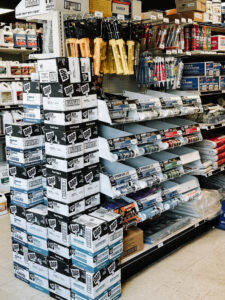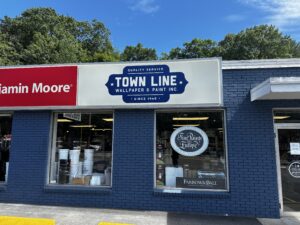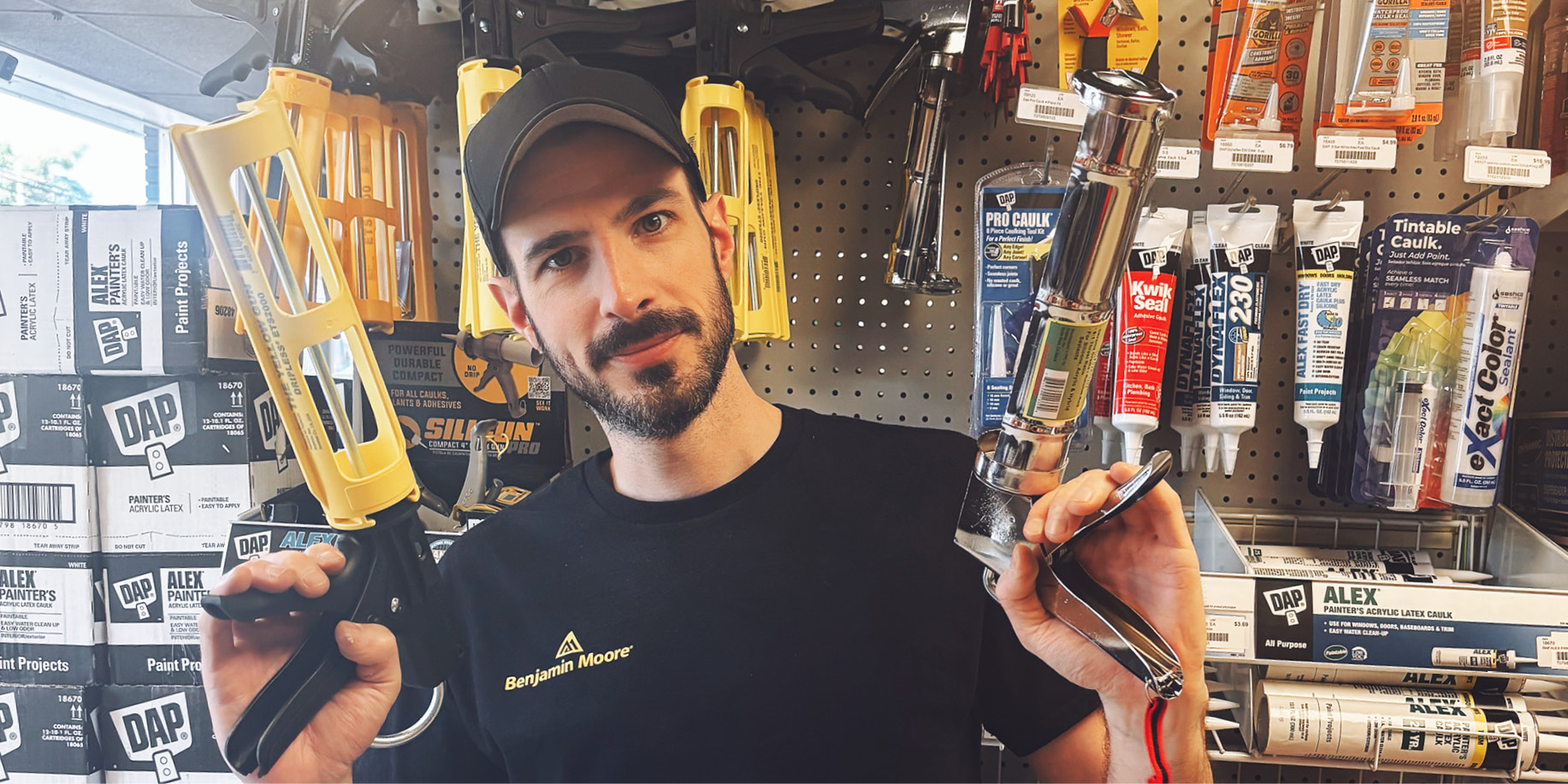For many contractors, caulking is like a second arm—an item many can’t work without. DIYers are also in need of caulk products, but often need direction to know what to buy. While caulk and caulk tools are small categories by size in many paint and decorating stores, this department can make a significant impact in sales volume when curated effectively for pros and DIYers.
At Town Line Wallpaper and Paint in Malden, Massachusetts, manager and buyer Gerard MacNeil’s 25 years of experience has provided him the knowledge and skill to expertly merchandise this category. MacNeil shares how he sells caulk and caulk tools in his store and how other retailers can better showcase these products.
Quality Over Quantity
With an overwhelming amount of caulk, caulk guns, tools, accessories and removal products on the market, choosing the right item can often be intimidating for customers. Providing the highest quality products and not confusing customers with a dizzying array of choices is important to MacNeil and his customers.
 Town Line Wallpaper and Paint carries just a few lines of caulk from select vendors the operation has strong relationships with. MacNeil only purchases around $50,000 worth of caulk per year, not including caulking accessories or tools.
Town Line Wallpaper and Paint carries just a few lines of caulk from select vendors the operation has strong relationships with. MacNeil only purchases around $50,000 worth of caulk per year, not including caulking accessories or tools.
The store also carries three to four caulk gun varieties.
“We sell a tremendous amount of caulking guns,” MacNeil says. “We sell removal tools and accessories too, but caulking guns are our No. 1 bestsellers apart from the caulk itself.”
MacNeil works to ensure his customers are educated about the quality of a caulk or caulking product before purchasing.
“Most painters are going to choose a caulk usually by price, not necessarily by what the application is trying to achieve,” he says. “Some contractors will always default to the cheapest caulk and you can have some issues with that down the road, so we encourage them to look at the better products we offer.”
Good, Better, Best
Aiming to prevent decision paralysis among customers and educating them about each product, MacNeil markets many of his caulking products with a good, better, best model. This allows customers to easily see the differences in performance and quality for each item, giving them the opportunity to learn about the options and choose the most practical one for their job.
“I’m not making it too confusing for the customer,” he says. “Having a good, better and best option seems to work well for us. I know some stores have a gazillion different options. I even see that when I go to order products because there are a million brands out there.”
Optimal Product Placement
Selling strategies for caulk and caulk tools is similar to selling impulse items. The key to showcasing this product to the best ability is placing it in clear view for the customer at the entrance of the store.
“Product placement is key,” MacNeil says. “If you’re a paint contractor walking into a paint store and you do this professionally for a living, or even a homeowner working on a project, you should have a tube of caulking. It almost seems to be an impulse item. It took us some time to figure out, but putting it exactly where it is in my store now has worked wonders for us.”
professionally for a living, or even a homeowner working on a project, you should have a tube of caulking. It almost seems to be an impulse item. It took us some time to figure out, but putting it exactly where it is in my store now has worked wonders for us.”
Town Line has multiple power aisles which are shelf-lined walkways filled with high-impact paint necessities that lead straight to the store’s cash register at the back of the store, MacNeil says. The store’s caulking selection is located near this aisle, allowing customers to see these products right away.
“This category is something that needs to be out in the open,” he says. “You don’t put it in aisle three. We found putting caulking products within the first 15 feet of the store works the best for us.”
In addition to strategic product placement, customers are more likely to purchase items if they can see how they work in person in the store. MacNeil likes to include caulking product demonstrations in his store, and recommends other retailers do the same.
“Some of our vendors provide nice endcap displays and we have a demonstration with some product applied under a backer rod hanging off the channel strips on the shelves,” he says. “Once a customer can touch it, feel it and see it, they can fully understand the product. It’s a guaranteed sale every time.”






